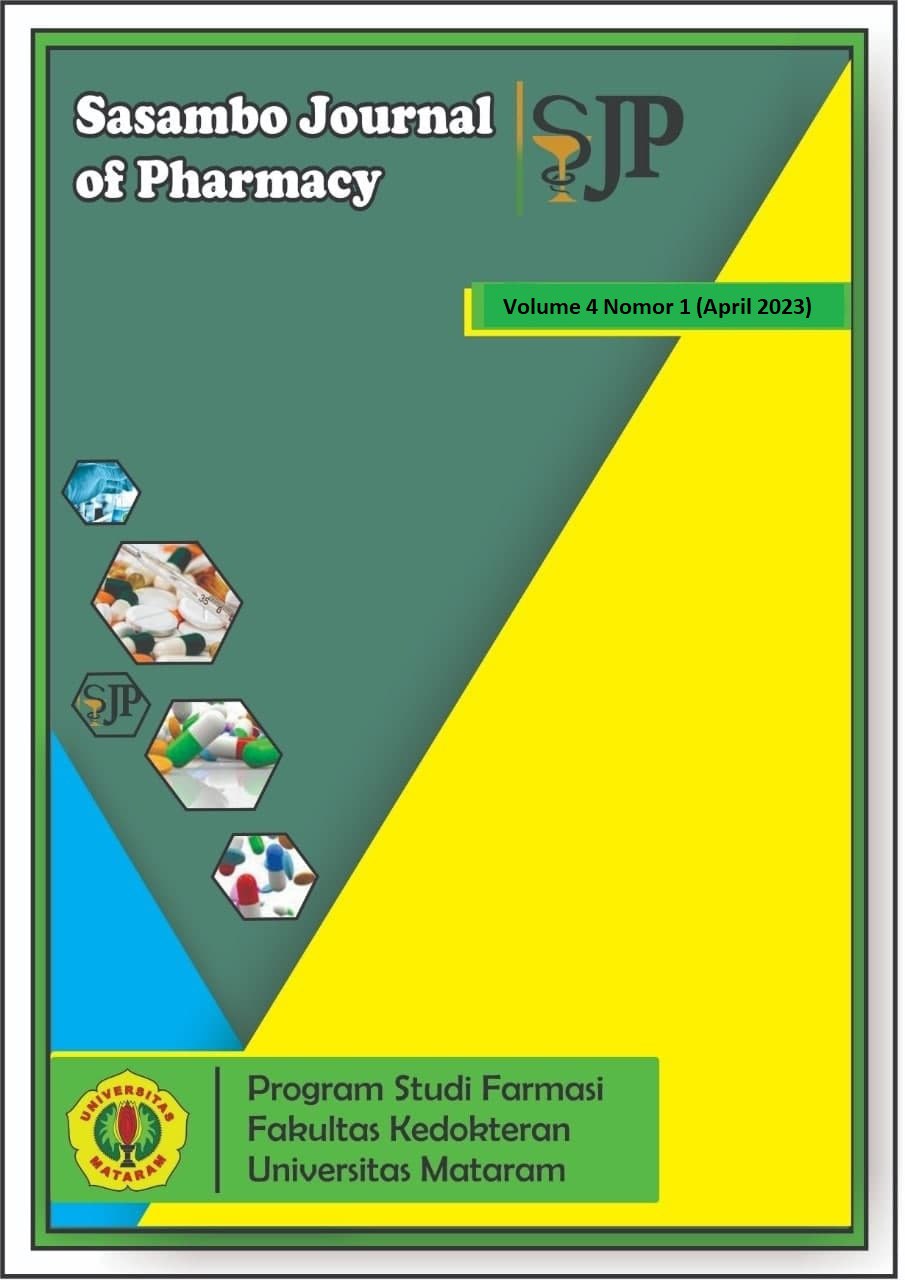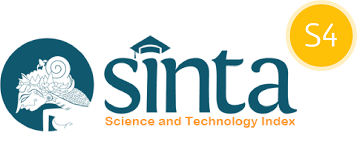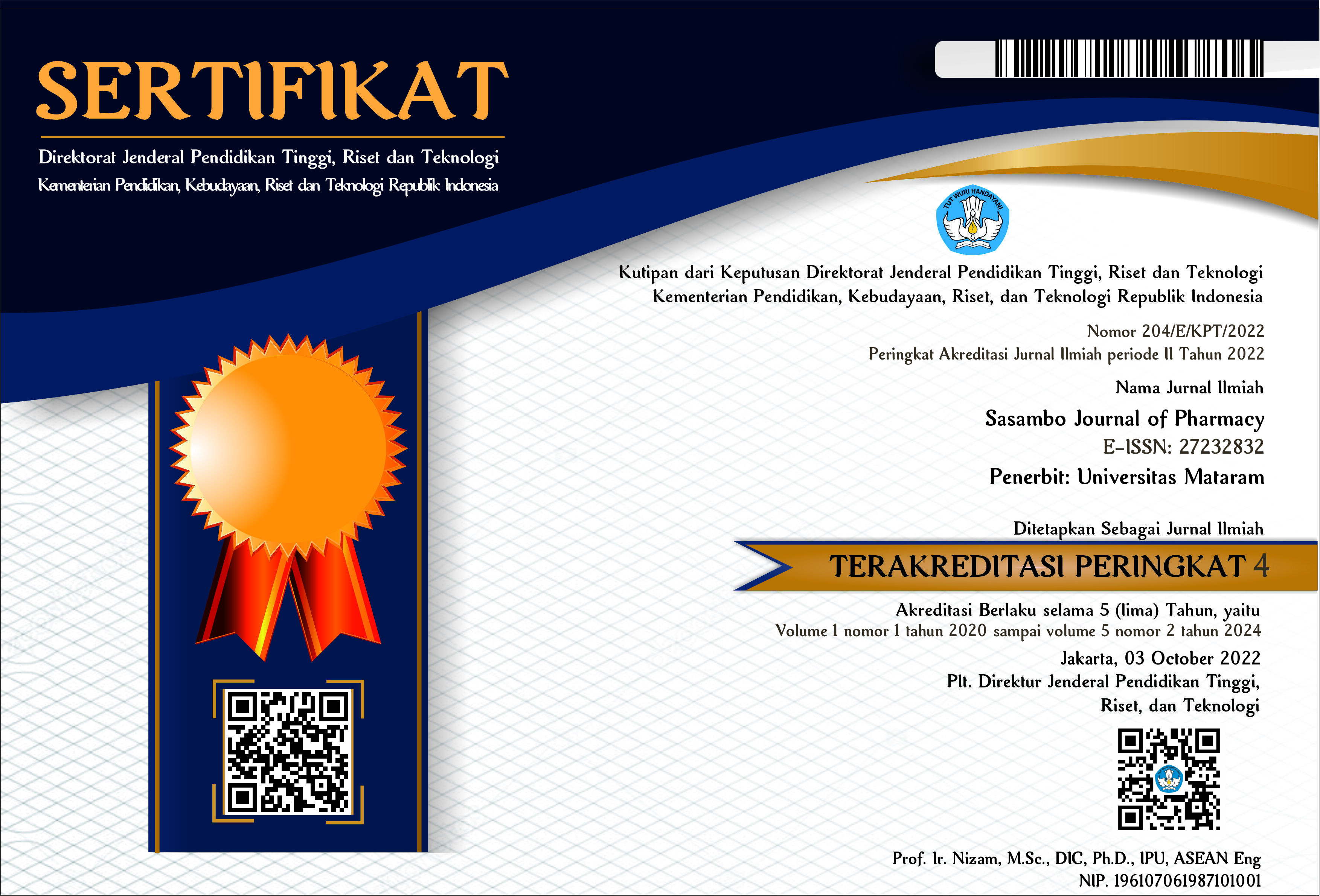Artikel review: Perawatan tradisional Indonesia bagi ibu pada masa nifas
DOI:
10.29303/sjp.v4i1.206Downloads
Abstract
Indonesia is a country that has a variety of cultures. The ethnic groups that are widespread in Indonesia have diverse cultures with their own characteristics. Culture is believed to be useful in aspects of life, one of which is related to medicine. Traditional medicine in Indonesia is a unique culture passed down from time to time, from one generation to another. This treatment is more sought after by the community because it is easy to obtain and affordable. This article purpose is to provide an overview of traditional treatments in Indonesia from several regions in Indonesia from Sabang to Merauke. This review contains care for mothers in the postpartum period from the characteristics of each region by utilizing typical Indonesian plants that grow in the surrounding environment. The cultural heritage related to this treatment is still maintained and is carried out by some people.
Keywords:
Postpartum Care, Postpartum Tradition, Postpartum CultureReferences
Febrianti Selvia. (2019). Perawatan Tradisional Pada Depresi Postpartum: Kajian Literatur. Journal of Borneo Holistic Health, 2(1),74-83. https://doi.org/10.35334/borticalth.v2i1.663
Indriastuti,D., & Tahiruddin,T. (2021). Tomboro :Praktik Mandi Uap Untuk Ibu Nifas Berdasarkan Budaya Suku Muna. Jurnal Penelitian dan Pemikiran Ilmiah Keperawatan,7(1), 6-12. http://dx.doi.org/10.30659/nurscope.7.1
Mangamba,C., Maria,H.,J., & Jenny,N.,M. (2020). Pengobatan Tradisional (Bakera) di Desa Talengan Kecamatan Tabukan Tengah Kabupaten Kepulauan Sangihe. Jurnal Holistik, 13(4), 1-18.
Mariyati & Gloria,S.,T. (2018). Perawatan Diri Berbasis Budaya Selama Masa Nifas Pada Ibu Postpartum. Jurnal Keperawatan, 6(1) ,47-57.
Marwati &Amidi. (2018). Pengaruh Budaya, Persepsi, Dan Kepercayaan Terhadap Keputusan Pembelian Obat Herbal. Jurnal Ilmu Manejemen, 6(1) ,168-180.
Pattinasarany, G., M., Arwyn,W.,N & Hapsari,P. (2020). Praktik Tradisional Pada Perawatan Masa Nifas. Jurnal Keperawatan Muhammadiyah, 5(1), 320-328.
Prastiwi,R.,S. (2018). Pengobatan Tradisional (Jamu) Dalam Perawatan Kesehatan Ibu Nifas Dan Menyusui Di Kabupaten Tegal. Jurnal SIKLUS, 7(1), 263-268 .
Safitri,F., Nuzulul ,R., Karisma,M., & Marniati. (2020). Perilaku Ibu Terhadap Tradisi Perawatan Masa Nifas Di Wilayah Kerja Puskesmas Jeulingke Kota Banda Aceh. Journal of Healthcare Technology and Medicine, 6(1), 538-549.
Sari, L.,S., Husaini, & Bahrul,I. (2016). Kajian Budaya Dan Makna Simbolis Perilaku Ibu Hamil Dan Ibu Nifas. Jurnal Berkala Kesehatan, 1(2), 78-87.
Usman & Sapril. (2018). Pemanfaatan Budaya Posoropu dalam Perawatan Masa Nifas oleh Perempuan Buton Utara. JURNAL MKMI, 14(3), 268-278. http://dx.doi.org/10.30597/mkmi.v14i3.4453
Yufuai,A.,G., & Laksomono,W. (2013). Pratek Budaya Suku Kampung Yepase Terkait Perawatan Kehamilan, Nifas dan Bayi di Distrik Depapre Kabupaten Jayapura. Jurnal Promosi Kesehatan Indonesia, 8(2), 100-111.
License
Copyright (c) 2023 The Author(s)

This work is licensed under a Creative Commons Attribution 4.0 International License.
Authors who publish with Sasambo Journal of Pharmacy (SJP), agree to the following terms:
- Authors retain copyright and grant the journal right of first publication with the work simultaneously licensed under a Lisensi Creative Commons Atribusi 4.0 Internasional. This license allows authors to use all articles, data sets, graphics and appendices in data mining applications, search engines, web sites, blogs, and other platforms by providing an appropriate reference. The journal allows the author(s) to hold the copyright without restrictions and will retain publishing rights without restrictions.
- Authors are able to enter into separate, additional contractual arrangements for the non-exclusive distribution of the journal's published version of the work (e.g., post it to an institutional repository or publish it in a book), with an acknowledgment of its initial publication in Sasambo Journal of Pharmacy
- Authors are permitted and encouraged to post their work online (e.g., in institutional repositories or on their website) prior to and during the submission process, as it can lead to productive exchanges, as well as earlier and greater citation of published work (See The Effect of Open Access).







